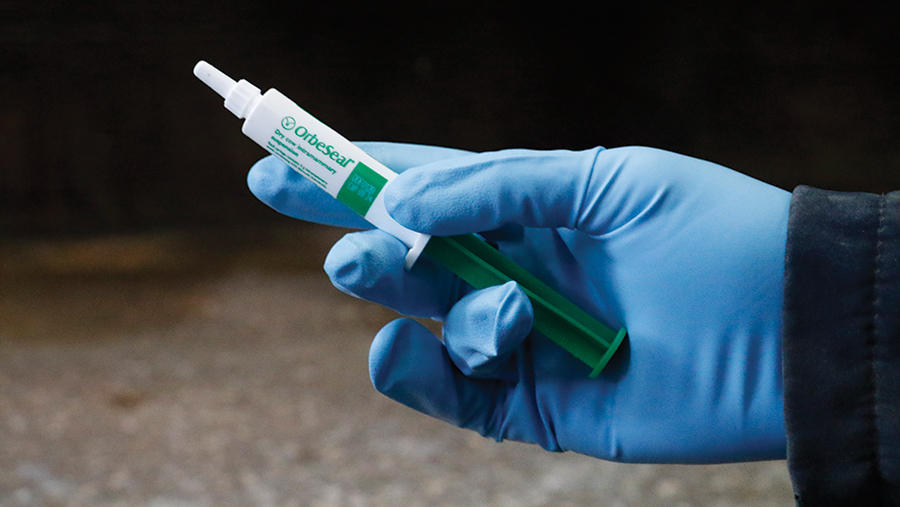How to dry off cows to treat mastitis successfully
 © Rhian Price
© Rhian Price Mastitis is the inflammation of the mammary gland and udder tissue, and is a major endemic disease of dairy cattle.
It usually occurs as an immune response to bacterial invasion of the teat canal by a variety of bacterial sources present on the farm.
Drying off is a great opportunity to cure existing mastitis infections and protect against new ones.
See also: Video: 15 key steps to achieve best-practice drying-off protocol
Here, vet Rachel Hayton from Synergy Farm Health, answers some key questions on what to consider when planning your drying off routine.
Should all cows receive internal teat sealant?
The answer to this is probably yes, but it depends how many cows pick up new infections across the dry period.
Less than 10% of low cell count cows should acquire a high somatic cell count (SCC) above 200,000 cells/ml by their first milk recording.
If the figure is more than 5%, then an internal teat sealant might help. This physically prevents new infections ascending the teat canal in the high-risk periods after drying off and just before calving, or due to summer mastitis.
Of course, cows are still at risk of infection after calving when the sealant has been removed.
Which cows will benefit from dry cow antibiotic treatment?
Only infected cows need antibiotics.
They can be identified using a combination of SCC and clinical mastitis data, and possibly the California Milk Test.
Cows with an SCC over 200,000 are probably infected, but the threshold could be set lower to reduce the risk of missing individual infected quarters.
With a target of more than 85% of high cell count cows calving in low, the dry period is the best opportunity for a cure.
This is an area to discuss and monitor with the vet. We usually look at the past three months’ records and often take into account teat lesions and yield too.
Is the drying off routine good enough?
Have there been any mastitis cases after drying off? Some milk contracts require a veterinary declaration of training in the correct application and removal of internal teat sealant.
This could be a good opportunity to review all aspects of drying off and the latest techniques.
Successful drying off needs a stress-free environment, sufficient labour and the right kit. A bit of pre-planning makes it far more likely to run smoothly.
Teats need surgical level disinfection with cotton wool and surgical spirit. If contamination occurs, start again.
Partial tube insertion minimises damage to the teat orifice and if double tubing, one teat should be finished before moving on to the next. Accidental introduction of microbes to the udder is not a good start to the dry period.
Finally, at least two methods of marking dry cows should be used, as well as a good-quality post dip and cows should have somewhere clean to stand for half an hour post dry-off.
Cows should also be monitored closely for a few days, so it is best to delay moving them far.
How should dry period performance be monitored?
Points to monitor regularly would include:
- adverse events after drying off
- dry period cure rate greater than 85%
- dry cow and heifer new infection rate lower than 10%
- the proportion of cows receiving antibiotic dry cow therapy.
Disappointing dry period cure rates could be a sign of poor cow selection for antibiotic therapy, inappropriate choice of antibiotic, certain problem mastitis pathogens, or even antibiotic resistance.
They can also occur due to very low culling rates in expanding herds.
Dry period cure rates will also look disappointing when a large percentage of cows are picking up new infections across the dry period, often due to poor environmental hygiene around calving.
Therefore, it is really worth having a good look to see what the records are telling us.
If the dry period new infection rate is too high this might be due to infection acquired around dry-off from summer mastitis, or most frequently, around calving.
If a large proportion of cows are receiving dry cow antibiotic, it may be worth investigating.
Each month as part of Vet Viewpoint we will be featuring practical advice from an XLVets practice on a range of different subjects.
